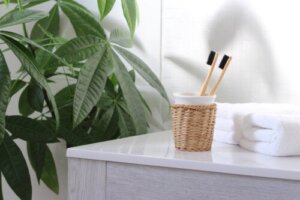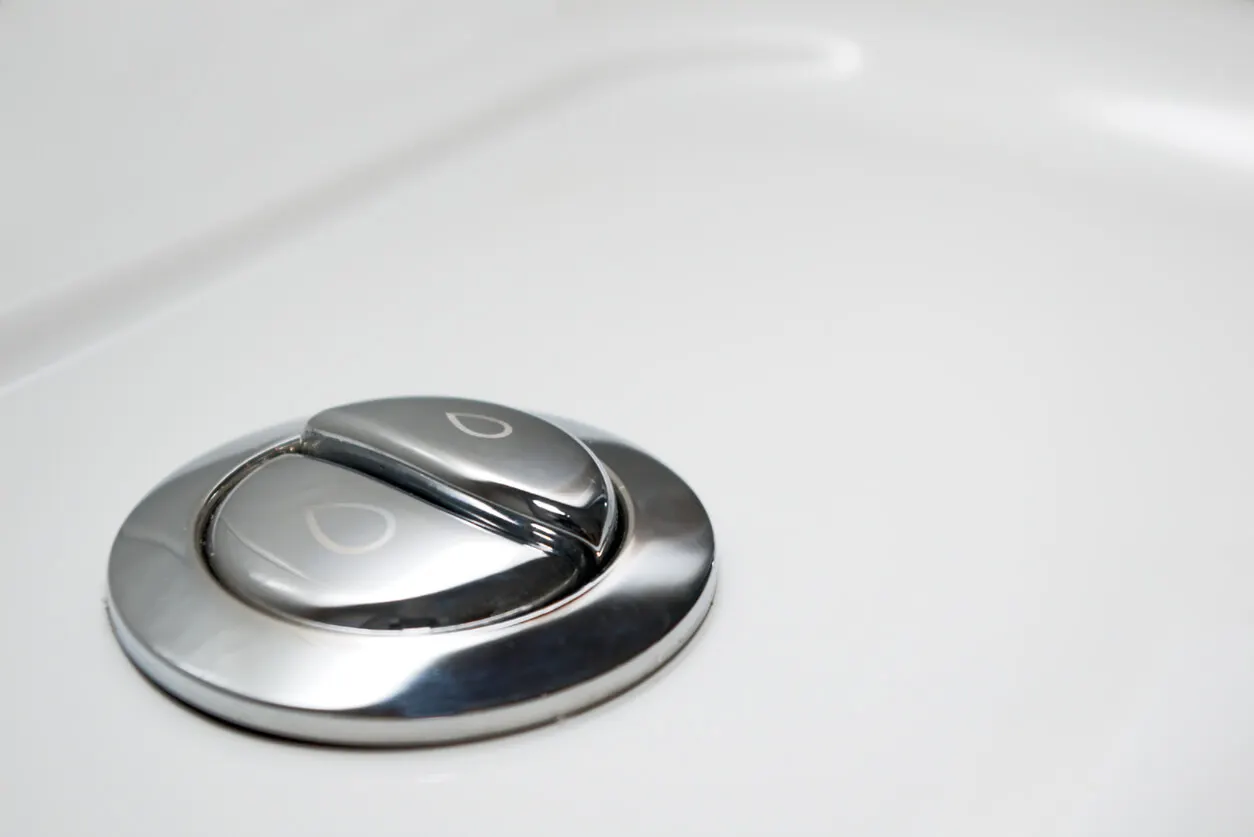8 Ideas for a Sustainable Bathroom

If you plan to remodel the look of your powder room, give going green a try. With a sustainable bathroom, you help the planet. In addition, you reduce many harmful effects on your health.
Nowadays, you can find countless accessories and energy-saving elements that guarantee comfort and functionality in the shower. Water, energy, and the materials that make up the bathroom influence the balance of the ecosystem. Do you want to learn more about this? If so, keep reading!
Why should you have a sustainable bathroom?
There are more and more movements that seek to protect and care for the environment. In addition, more and more people are adopting a healthy lifestyle. Hence the relevance of creating friendly and elegant spaces with an eco-friendly design.
With conventional toilets, you waste more water and there’s greater expenditure of electricity, in addition to the discharge of cosmetic waste that ends up polluting the oceans. In fact, the Aquae Foundation points out that flushing a toilet consumes between 7.5 and 26.5 liters of water.
When your shower lasts longer than 15 minutes, the average consumption increases. The same institution adds that whenever you brush your teeth with the faucet running, you drain another liter of water.
So, how can we change these common habits and realities? By modifying our habits and designing an ego-friendly bathroom.
Like this article? You may also like to read: Eco-Friendly Decoration: Sustainable Ways To Decorate Your Home
The best tips to have a sustainable bathroom
The convenient solution to transform traditional showers into an eco-friendly bathroom is to provide them with sustainable materials and apply the tips we’re going to present in this article.

1. Replace your traditional toilet
Older toilets use more water. That’s why dual-flush toilets are better. That is to say, those that empty the whole tank to get rid of solids and only half a tank in the case of liquids.
If your conventional toilet is in perfect condition, don’t throw it away. Consult with a master builder about the possibility of coupling it to the dual-flush system.
2. Say goodbye to chemicals
If you want a 100% sustainable bathroom, both the products you use for your hygiene and those used in the bathroom must be natural. Chemical-free ingredients are better for your health and don’t alter the environment.
The Toxic-Free Home organization recommends discarding terpenes and lemon or pine fragrances, especially on days of high ozone pollution or when using air purifiers or ionizers. They also suggest buying only essential items so as not to create a cocktail of chemicals.
3. Place your water heater in a strategic spot
Water heaters shouldn’t be too far away from the bathroom. If the hot water takes a long time to reach the taps, the consequence is the multiplication of electric energy consumption. Position it as close as possible to the toilet.
4. Use energy-saving lighting
When it’s time to change the light bulbs, take the opportunity to use energy-saving or LED bulbs. This type of lighting is energy-saving. Also, you get the benefits of a white light that enhances clarity.
According to the Banco Bilbao Vizcaya de Argentaria (BBVA), having LED lights brings advantages such as those listed below:
- Varied designs
- Instant ignition
- Longer durability in places without excessive heat
- Less pollution since they don’t contain mercury
Natural light is also favorable for bathrooms.
5. Install energy-saving faucets
Faucets with sensors, timers, or single-lever faucets are ideal for eco-friendly bathrooms. Due to their characteristics, these faucets tend to shut off automatically, considerably reducing your water consumption.
6. Use ecological materials
Make sure that the furniture and other decorative elements in your bathroom are really sustainable. Such materials provide originality, energy, and elegance to any ecological bathroom.
The following are good alternatives:
- Jute
- Stone
- Bamboo
- Marble
- Wood
- Plants
- Recycled items
7. Favor showers over baths
Bathing under the shower, instead of the bathtub, represents a significant saving of water. More water is needed in the bathtub for complete personal hygiene. However, it’s also important to remember that the time you spend in the shower is also a major factor when it comes to saving water. As you can imagine, the short the shower, the better.
We think you may also enjoy reading this article: 8 Failsafe Ideas to Decorate Your Home with Mustard Color
8. Decorate with natural paint
Color the walls with paints prepared without solvents or toxic additives. Instead, pigments created with mineral substances, such as castor oil, linseed, and soy, are healthier and more friendly.
They cover as well as any other paint, protect from moisture, and offer a variety of color palettes for you to select the shades of your choice.

Is there a second toilet option for sustainable bathrooms?
In addition to the dual flush toilet, a second sustainable alternative joins the environmental initiative. It consists of a composting toilet, which is ideal for rural areas without sanitation networks.
This proposal is based on reusing the excrement and urine deposited in the toilet by mixing them with sawdust and other organic compounds that serve to fertilize the soil.
So, knowing all this information, what tips would you like to implement to enjoy a sustainable bathroom?
All cited sources were thoroughly reviewed by our team to ensure their quality, reliability, currency, and validity. The bibliography of this article was considered reliable and of academic or scientific accuracy.
- ¿Cuánta agua gastas en el baño? Fundación Aquae. España. https://www.fundacionaquae.org/cuanta-agua-gastas-en-el-bano/
- Estas son las ventajas de las bombillas LED o de ‘bajo consumo’ para ahorrar luz. BBVA. España. https://www.bbva.com/es/sostenibilidad/estas-son-las-ventajas-de-las-bombillas-led-o-de-bajo-consumo-para-ahorrar-luz/
- Terpeno. Instituto Nacional del Cáncer. Estados Unidos. https://www.cancer.gov/espanol/publicaciones/diccionarios/diccionario-cancer/def/terpeno
- Productos de limpieza limpios. Hogar Sin Tóxicos. España. https://www.hogarsintoxicos.org/es/soluciones/productos-limpieza-limpios
This text is provided for informational purposes only and does not replace consultation with a professional. If in doubt, consult your specialist.








